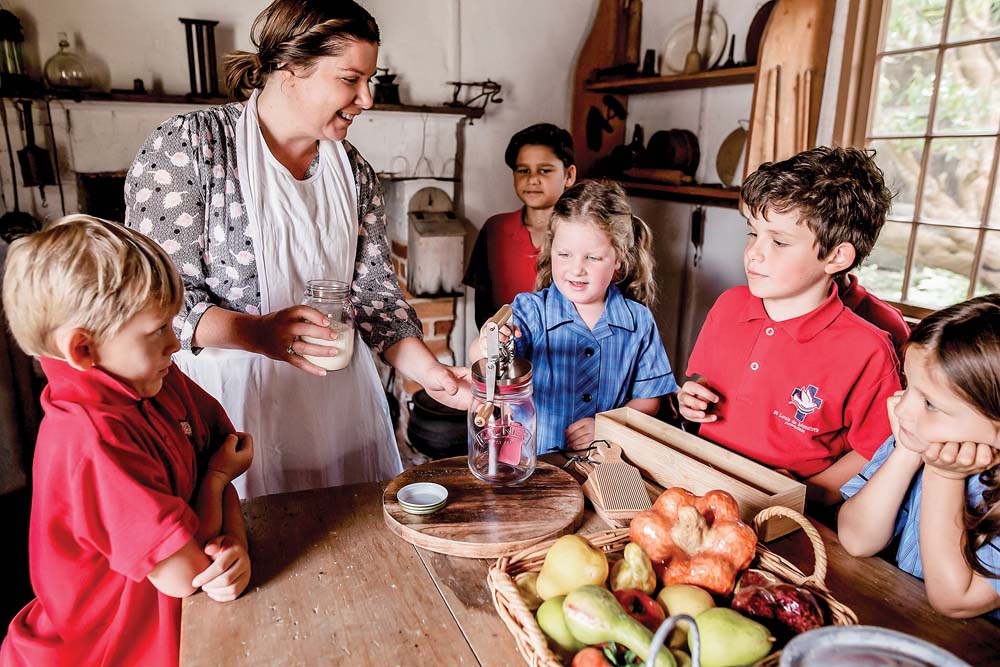
THE oldest house on the Mornington Peninsula is being used as a base from which to teach schoolchildren about the contrasting lives of early European settlers and Aboriginals.
A traditional Bunurong dwelling, or willum, will be built alongside McCrae Homestead.
The National Trust-owned McCrae Homestead, in Beverly Road, McCrae – one of the oldest homes in Victoria and the oldest owned by the trust – will offer a “cross-cultural education experience” to primary school children.
The experience, developed by the trust’s education team in partnership with the Bunurong Land Council Aboriginal Corporation, will show students the similarities, and differences, between a colonial settler family (the McCraes) and Indigenous communities during life in the mid-19th century.
Their hands-on experiences can range from churning butter, laundering with washboards to searching for animal tracks, collecting bush foods and learning Bunurong dance moves.
When building his house, McCrae hoped to make a success of the 8269 hectares he had bought from the colonial government. His Arthur’s Seat Run was at the base of what was then known as Arthur’s Seat Hill, or Wonga Mar by the Bunurong.
McCrae and his artist wife Georgiana lived there for six years with their seven children.
While there, their daily life was recorded in diaries, letters and sketches, including their interactions with the Bunurong people. Their accounts suggest there was reciprocal regard for one another which led to the formation of some close friendships, particularly between Bunurong man, Ben Benji, and his “lubra” (wife) Eliza, and Georgiana McCrae and her children.
This seeming harmonious relationship was in stark contrast to that of many of the McCraes’ colonial counterparts during the same time.
National Trust of Australia (Victoria) CEO Simon Ambrose, said the cross-cultural experience was designed to “introduce primary school students to the similarities, and differences, between a colonial settler family and local Indigenous communities during life in the mid-19th century”.
It would be a “valuable opportunity to not only recognise the relationship between the two cultures, but to celebrate and promote the histories of our Indigenous peoples.
“We believe it is the National Trust’s responsibility to protect and share Australia’s diverse natural, cultural, social and Indigenous heritage,” Mr Ambrose said.
Taungurung woman and Indigenous educator Samantha Trist, will teach students about “following Bunjil’s lore” and show them how to search for animal tracks and bush foods
Students will also learn Bunurong dance moves and the importance of storytelling and ceremony.
Ms Trist said she hopes that students can “walk away with a new level of respect for our land”.
McCrae Homestead, 11 Beverly Road, McCrae, is open 11am to 4pm Sundays (closed July and August).
First published in the Southern Peninsula News – 30 July 2019